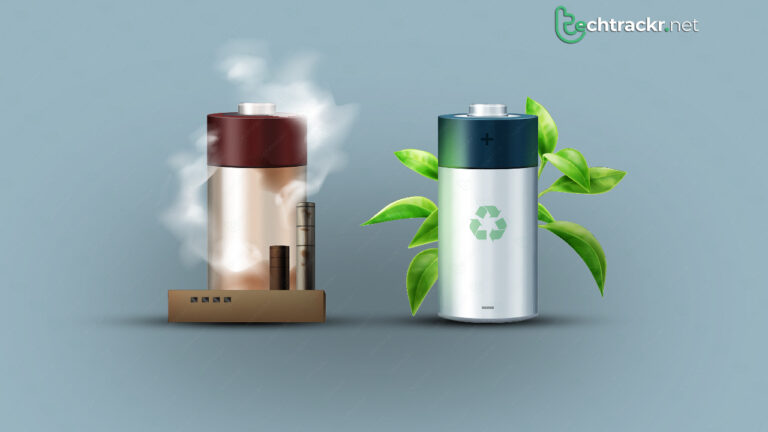
From smartphones to electric vehicles, batteries stand as the sole driving force behind some of the most influential technologies in our daily lives. Although batteries themselves are not a novel concept, the lithium-ion (Li-ion) variety that fuels the majority of our devices only began to gain prominence a mere few decades ago. However, just as the world has transitioned to sustainable and renewable energy sources such as wind and solar power, we have also witnessed the emergence of innovative alternatives to lithium-ion batteries in recent years.
So, within the confines of this article, let’s swiftly delve into the lithium-ion battery substitutes that loom on the horizon. But before we embark on that exploration, let’s revisit the inner workings of modern batteries and the multitude of challenges that afflict this technology.
The science behind lithium-ion batteries
Before we embark on an exploration of how rival technologies operate, it’s prudent to revisit the fundamentals of a rechargeable lithium-ion battery and understand why they may not be the optimal choice in today’s rapidly evolving world.
Each battery consists of three essential components: a cathode, which serves as the positive electrode; an anode, the negative electrode; and an electrolyte medium. When you deplete a charged Li-ion battery, positively charged lithium ions traverse from the anode to the cathode. Simultaneously, this initiates the flow of electrons, a valuable resource for powering electronic devices. When you recharge a Li-ion battery, this process is essentially reversed.
In essence, this cycle permits the charging and discharging of a Li-ion battery numerous times. However, it is crucial to recognize that this technology is far from flawless.
Lithium-ion batteries come burdened with a multitude of limitations that have cast shadows over various realms, ranging from iPhone manufacturing to the feasibility of electric vehicles. Among these issues are:
- Safety
- Durability
- Sustainability
- Scarcity
Also read: How to check battery health on Android easily
Best lithium-ion alternatives
Hydrogen Fuel cells
While not resembling the rechargeable lithium-ion battery in its operation, hydrogen fuel cells have risen to prominence as a sought-after alternative for delivering clean energy. This process involves the amalgamation of stored hydrogen gas with atmospheric oxygen to generate electricity and water vapor. To put it differently, the result of this reaction is entirely eco-friendly.
Nevertheless, there remain several drawbacks associated with hydrogen fuel cells. In the realm of automotive technology, for instance, establishing a network of hydrogen refueling stations is imperative. Moreover, the initial construction of hydrogen fuel cells is a rather costly endeavor. Consequently, even though vehicles like the Toyota Mirai exist, only a handful of regions across the globe possess the infrastructure needed to replenish its hydrogen reservoir.
Lithium-sulfur batteries
Lithium-ion batteries rely on cobalt as the anode material, a resource that has posed challenges in terms of procurement. Lithium-sulfur (Li-S) batteries, on the other hand, present a potential solution to this predicament by utilizing sulfur as the cathode material. In addition to substituting cobalt, Li-S batteries come with several advantages, notably an increased energy density and reduced production costs.
However, the primary hurdle facing lithium-sulfur batteries currently revolves around their rapid degradation rate. Therefore, despite witnessing the deployment of a solar-powered aircraft equipped with a Li-S battery as far back as 2008, we still await ongoing research efforts to render this technology practical for everyday electronic applications.
Also read: How to check data usage on your Android smartphones
Aqueous magnesium batteries
This concept carries various advantages, commencing with the widespread abundance of magnesium and its superior ionic charge in comparison to lithium. This heightened ionic charge translates to increased energy density for batteries of equivalent size. Furthermore, these batteries rely on an aqueous electrolyte, specifically water, as opposed to a flammable organic liquid.
Despite the promise it holds, we find ourselves in the nascent stages of research into this technology. Several limitations impede its immediate substitution for lithium-ion batteries. For instance, the existing cathode materials designed for lithium are incompatible with magnesium. Additionally, the utilization of an aqueous electrolyte imposes a ceiling on the battery’s maximum voltage, as water undergoes breakdown at higher voltage levels.
Solid-state batteries
Lithium-ion batteries rely on a liquid electrolyte medium, facilitating the movement of ions between electrodes. Typically, this electrolyte comprises an organic compound, which possesses the potential to ignite in the event of battery overheating or overcharging. In an effort to mitigate this hazard, researchers have introduced an alternative known as solid-state batteries. These batteries employ a solid inorganic electrolyte capable of withstanding challenging environmental conditions and drastic temperature fluctuations.
Beyond the reduced risk of combustion, solid-state batteries also boast the capacity to store more energy compared to their lithium-ion counterparts. The enhanced conductivity offered by a solid electrolyte is poised to result in faster charging times, thus promising superior device capacity and charging speeds for products transitioning to this technology.
